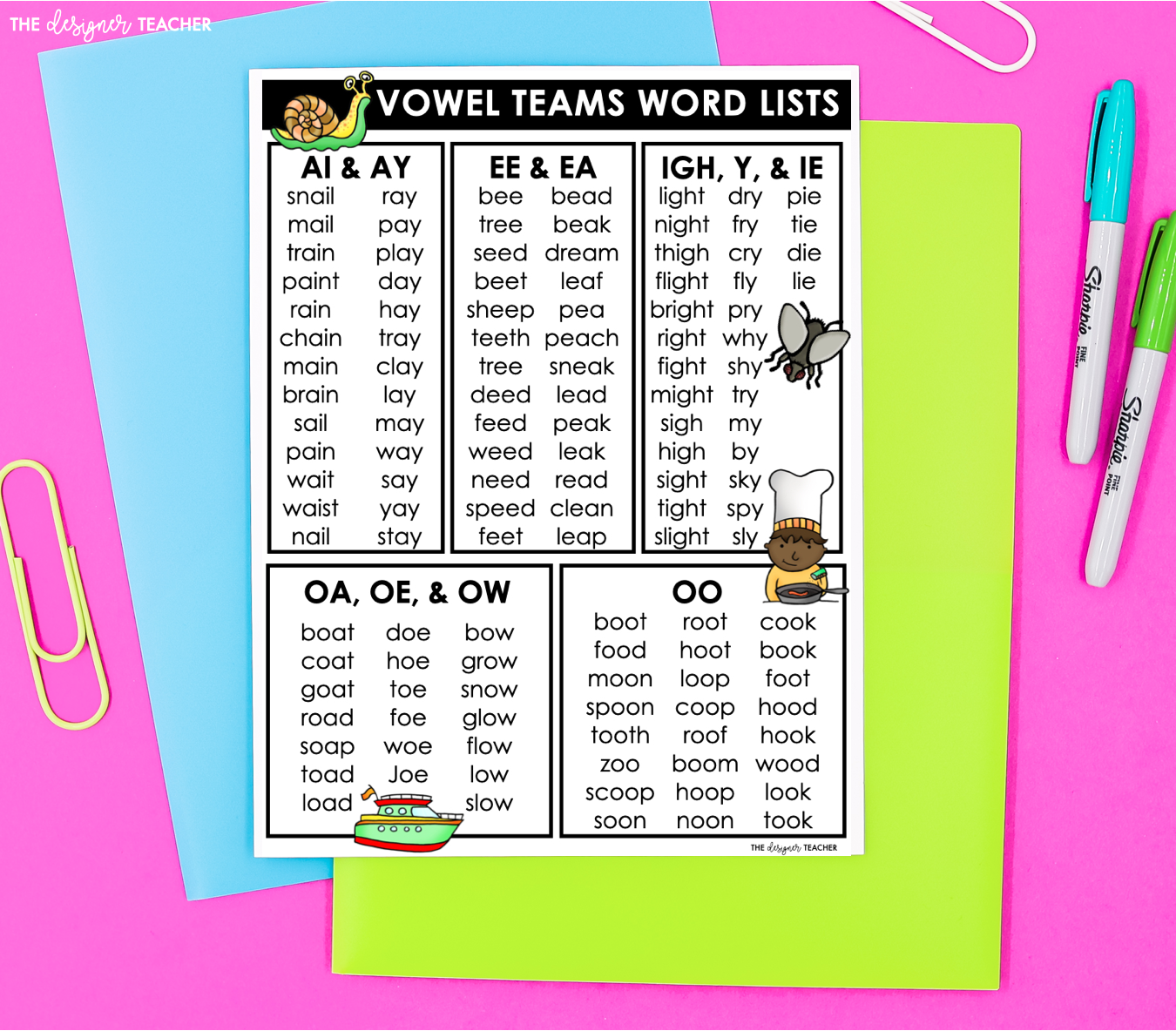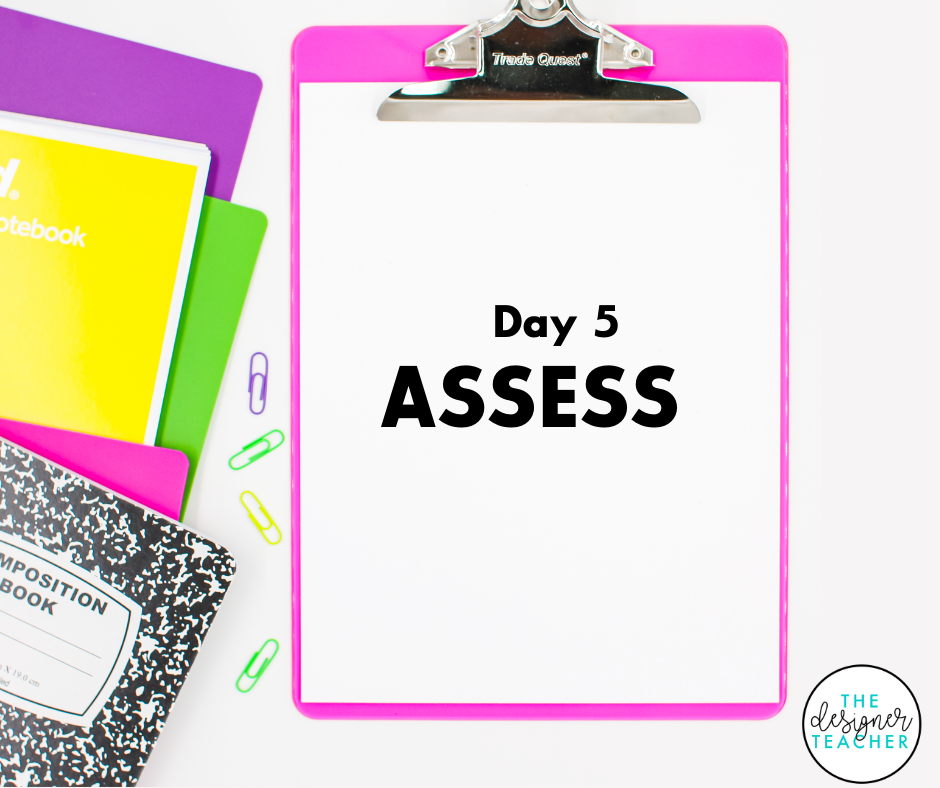How to Teach Vowel Teams
Once students have learned the spelling of short and long vowels in CVC and CVCe format, they can learn more spellings of long vowel sounds, such as vowel teams. I typically also teach digraphs, consonant blends, and r-controlled vowels before vowel teams. Vowel teams are two or more letters that make one vowel sound. I typically teach these vowel teams in groups according to what sound they make. For example, I teach ee and ea together because they make the same long /ē/ sound.
As a special education teacher, I find that introducing one set of vowel teams that all make the same sound a week works well. I usually teach ai/ay first, then ee/ea, then igh/ie/y, then oa/ow/oe, and finally oo (which makes two sounds). If you’re teaching general education, you may find that you’re able to progress more quickly. I follow the same general phonics lesson plan each week, which is easier for both you and your students. In this post, I’ll use ai and ay for the examples and explain how I would teach words with ai and ay over the course of one week. You can follow the same structure when teaching other vowel teams.
Day 1
Tell students that sometimes two letters together make one vowel sound. This week, they’ll be learning two new ways words with the /ā/ sound can be spelled. Show a picture of a rain and say /r/ /ā/ /n/. Show or write the word rain, and explain that ai says /ā/ and is used in the beginning or middle of one syllable words. Point to a picture of hay and say /h/ /ā/, hay. Explain that ay also says /ā/ and is used at the end of one syllable words. After modeling, lead students in guided practice of reading more words with ai and ay, noting that ai is used in the middle of the words, and ay is used at the end. Then, practice reading fluency sentences together that contain words with ai and ay and other mastered word types. You can find the needed picture cards, word cards, and fluency sentences in my Phonics by Design Vowel Teams Unit.
Need a list of vowel teams to use in your lessons?
Sign up below and get a vowel teams list sent straight to your inbox!
Day 2
Briefly review what you taught yesterday, and then tell students they’ll be practicing writing words with /ai/ and /ay/ today. Show train picture card. Model segmenting the word by saying /t/ /r/ /ā/ /n/ (feel free to use tactile method such as tapping, chopping, etc.) and spell out the word on the board or chart paper. Explain to students that you knew to use ai rather than ay because the /ā/ sound is not the last sound in train. Repeat with play, this time time explaining how you knew to use ay rather than ai. Continue with other picture cards, having students segment the sounds as a group or taking turns. Finally, have students practice on their own by dictating words to them and having them write them down. You can also dictate a few short sentences that include words with ai and ay and other mastered word types.
Day 3
Today students will independently practice reading and writing words with the vowel teams ai and ay. I use the activity sheets included in my Phonics by Design Vowel Teams Unit and in my No Prep Pack.
Day 4
Review reading and spelling words with ai and ay before introducing a simple vowel teams matching game they can play in pairs. Spread out the cards in a grid face down. When it’s their turn, the student will turn over two cards and identify the pictures and/or read the words. If it’s a match, they keep the pair. If not, they put the cards back, face down. Students alternate turns until all pairs have been matched. The student with the most pairs wins. You can find vowel teams matching games in my Phonics by Design Vowel Teams Unit.
Day 5
Assess students by dictating ten words with ai and ay and having them record them. If you have time and a small enough group, you may also wish to have individual students read a few words with ai and ay for you as well.
This lesson plan schedule for teaching vowel teams is simple but effective!
Save yourself time by snagging everything you need to teach vowel teams in one place with my Phonics by Design Vowel Teams Unit Bundle. You’ll get all the materials mentioned in this post for each digraph (lesson plans, picture cards, word cards, fluency sentences, activity sheets, matching game), plus posters, flap books, and more! Snag it here.
No time to read now?








